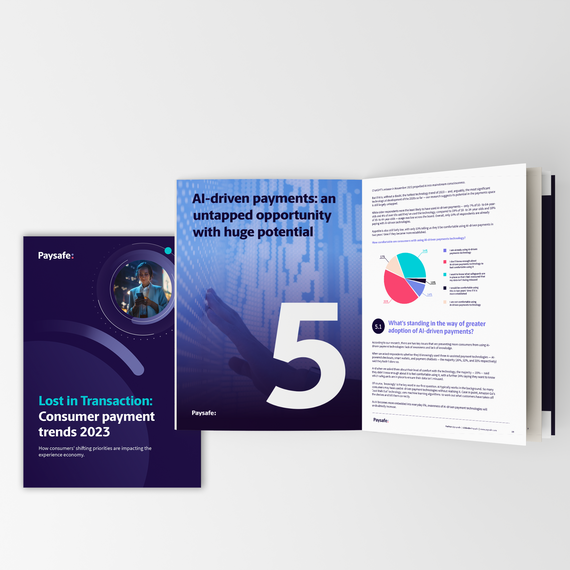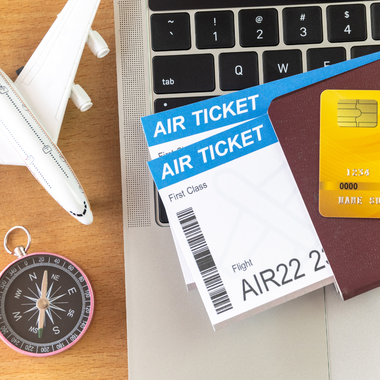
- Five minutes read
We need to rethink future delivery payments
COVID-19 has shone a light on a system that was flawed before the pandemic, and as we move beyond COVID-19 we must think about why we would return to the old ways of managing risk for future delivery payments.
One of many consequences of the COVID-19 era is an increased lack of certainty about what will happen in the future. Government guidelines and regulations are constantly changing, supply chains are often disrupted, and of course actually contracting COVID-19 (and therefore needing to immediately isolate) is still a very real threat. This has meant that planning for events weeks or even months in advance has become much more difficult for consumers and for businesses.
The recent example of travel restrictions in the UK is a prime example. A list of countries that tourists could visit for non-essential travel (and without needing to quarantine upon return) was published by the UK Government on May 12, and by June 4 the list had already been altered. The most significant change was that Portugal, historically the most popular permitted country with UK tourists by a distance, was downgraded off the list and reclassified as “essential travel only”.
This sudden decision has had a traumatic impact on both the consumers that have purchased flights and hotels in the country, and the travel companies that are now facing a tidal wave of refund claims.
What are future delivery payments?
There are many industries that operate a business model that heavily relies on accepting payments significantly in advance of the delivery of the goods of services the customer has purchased. As above, the travel industry is an obvious example. Ticketing for sports events, concerts, or other cultural activities is another. Even some businesses that ask for payment upfront to purchase raw materials for physical items, such as bespoke furniture makers, often demand payment from consumers monthly in advance of a final delivery date.
Where a business operates a model that creates a time gap between payment and delivery, its payments relationships are impacted. This is because the business’ acquirer is liable for chargeback claims made by the consumer (or their issuer) in the event of non-delivery of goods or services. This could be due to cancellations, supply chain issues, or that the business has completely ceased trading.
The acquirer, therefore, has to take action to manage the risk that is created when the payment is made. Traditionally this has been done in a number of ways, but most commonly involves withholding cash as collateral. But, while this is an understandable action, it does have negative repercussions for the business.
Why has this become a problem during COVID-19?
The principal issue for businesses is that the collateral held by the acquirer is directly proportional to the risk profile the acquirer determines, which can be a constantly changing during volatile market conditions. When this is the case, the acquirer may take the decision to withhold additional funds from the business at very short notice. This opaque practice may not only make it very difficult for a business to manage cashflows and liquidity, but it also has the potential to compound problems for businesses trying to navigate a hostile environment.
This has been the case during the COVID-19 pandemic. Lockdown has been devastating for industries such as travel and live events, and even as countries have begun re-opening businesses are still struggling to re-start their operations as their payments partner is continuing to hold an increased volume of cash. And without clarity on how collateral will be managed moving forward, planning a recovery strategy is almost impossible.
Rethinking future delivery payments
Considering these issues, it is not surprising that businesses are rethinking how they work with their acquirers. For acquirers too, limiting exposure without holding collateral (which can sometimes be physical) is preferable.
The solution that is coming to the fore is a model that is based on trusts, rather than collateral. Funds are escrowed with a third party instead of being held by the merchant, and are released to the business using fixed terms agreed by both parties.
This method has a number of benefits for businesses:
- Flexibility with clarity: While the terms of the trust are determined from the outset, they can be adjusted upon agreement between the acquirer and the business. This eliminates the lack of clarity that undermines the withheld collateral model, but still enables both parties to adjust the optimum terms of settlement for both parties in a changing market.
- Scalability: A trust model is not dependent on the volume of trading a business completes, and so isn’t impacted by changing market conditions or the businesses growing or contracting in size.
- Safeguarding consumer funds: As 100% of consumer funds are escrowed, they are guaranteed to be protected against future events such as cancellations or the businesses ceasing trading. Businesses can use the fact that consumer funds are safeguarded to restore customer faith in the industry and as a marketing aid to their business.
- Visible on the balance sheet: Collateral held by a payments partner is not registered on the business’ balance sheet, which causes further credit and liquidity issues. Cash held in trust by a third party is visible on the company’s balance sheet as restricted cash.
Looking ahead
COVID-19 has shone a light on a system that was flawed before the pandemic, and as we move beyond COVID-19 we must think about why we would return to the old ways of managing risk for future delivery payments. With benefits to all parties involved being clear, focusing on operating via trust model must be strongly considered moving forward.




